Have you ever heard of winemaking with grape stalks? Conversely, have you ever wondered why the destemming is the prevalent practice in the cellars? However, the “stem or not stem” diatribe is most likely as old as wine (or nearly so).
The grapes are usually destemmed and then pressed before the vinification. In fact, we speak of destemmer-crushing machines (be careful not to invert the sequence!). The stem vinification, on the other hand, consists in the vinification of the whole bunch, without destemming. The buch is lightly or not at all pressed. Another system provides that the grapes are first de-stemmed and crushed, then some stalks are added to the fermentation tanks. What is the best choice? Or rather, what are the advantages and disadvantages of these two practices?
Inevitably, by soaking in the must/wine, the stalks interact with it. They can release substances they contain or, conversely, absorb others. What is the stem composition? Try sucking on a piece and you will easily taste that it is tannic, slightly acidic and has a herbaceous aroma. The stalk contains water and various substances including some organic acids (tartaric and, above all, racemic), many tannins, etc. The acid component decreases with the lignification (it occurs in the last part of their seasonal cycle).
In wine history, both cases of winemaking can be found. Often, the choice was the result of chance, of the local tradition, or a consequence of the pressing techniques used. However, there was already a reflection on which system was better. In fact, if we read the viticultural treatises of all eras, from the Roman author Columella to the present day, the most common opinion was that vinification without stalks was better for obtaining fine and elegant wines, due to the bitter and herbaceous tastes brought from the stems. The stem fermentation was instead considered useful for wines from young vineyards or to improve those that were poor, in any case for wines with lower quality claims. We will see the reason for these statements. Today, we also have the data of numerous scientific researches that have compared winemaking with stems to that without.
So, let’s try to understand what are the general advantages and disadvantages of vinification with stems compared to that without. Here is a brief summary of the state of the art. Let’s start with the secondary effects, to get to the most important ones. The analytical data that I report are taken from the article by M. Blackford et al., “A Review on Stems Composition and Their Impact on Wine Quality”. , Molecules. 2021 Mar; 26 (5): 1240.
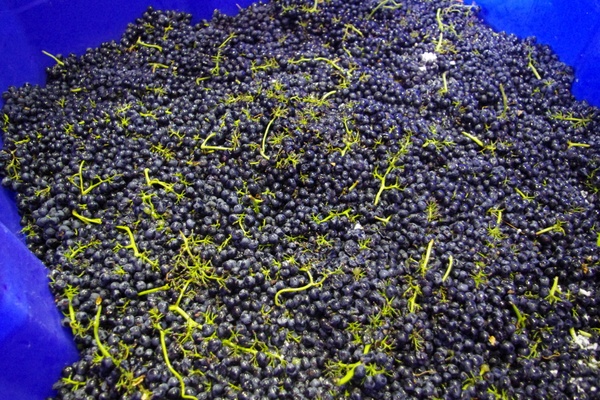
Does it improve the fermentation?
A first positive effect often mentioned in stem vinification is that there is a better fermentation. From the tests carried out, it is in fact possible to verify a slightly more favorable general trend. It is thought that this effect may be due to the additional amount of yeast that the stalks carry on their surface, as well as the ability to trap an amount of air between their roughnesses which favors the vitality of the microorganisms. Furthermore, the mass of the stalks seems to limit a little the temperature changes during fermentation, which favors the survival of the fermenting yeasts.
However, it has been found that the increased presence of oxygen also favors the development of unfavorable microorganisms. The most consequence is that there is generally a higher volatile acidity. Furthermore, in the presence of grapes that are not quite perfect, with some mold, the stem vinification seems to accentuate the severity of the effects on the wine, the so-called oxidase alteration (but it is not clear why).
The diluting and adsorbing effect
The stalks can release water in the must/wine, with a diluting effect on the other components. The water released is actually minimal on the mass of the must. Whether it is for this or for other reasons, in the research carried out there are differences in the composition of the must/wine, some minimal and others more important. Let’s see which ones.
In stem vinification compared to that without, a slight increase in pH was measured (it varies from 1% to 9% in the studies) and a decrease in acidity (2% -15%), but not always confirmed in all studies and for all varieties. The variation in acidity could depend on the dilution but not only. It is thought that there is also an action on the phenomena that induce the precipitation of tartaric acid. In fact, the stalks increase the presence of salts (especially potassium, but also calcium and phosphorus), which bind to the tartrate and favor its precipitation. In some studies, there were also slight variations in other acids.
It is often said that stem vinification has the effect of lowering the alcohol content of the wine (today considered positive). There are those who have correlated it to the dilution, but also to a possible adsorption effect of the ethanol molecules by the structure of the stalk. However, this effect has not been seen in the studies: in some cases, the variation is zero, in others slight (it varies from 1% to 8%). I think it makes much more sense to work well in the vineyard to have adequate production balances.
The stalks, on the other hand, seem to have an effect on the decrease in the color of the red wine, more or less evident depending on the variety. Anthocyanins decrease from 1% to 22%, as does the intensity of color (from 7% to 33%). In particular, the yellowish reflections are accentuated in aging. The hypotheses about the cause are different, perhaps all together: dilution, color adsorption and pH variations.
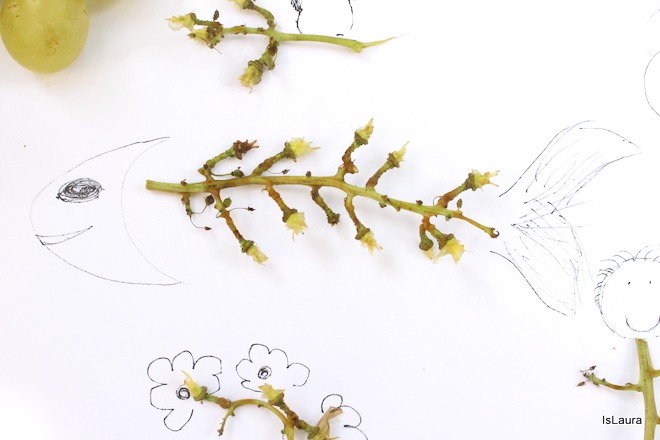
The most important effects: aromas and tannins
The stalks release aromas that are not exactly the most pleasant ones. Chemical analyzes confirm the increase above all of pyrazine compounds, which give “green” (grass or pepper) aromas. Aroma studies are not easy. As I wrote previously, even if we analyze the presence and concentration of the aromatic molecules in a complex solution such as wine, it is not easy to predict their olfactory perception. Studies of sensory analysis showed that the wines made with stalks are less fruity (fresh fruit), while the sensations of cooked fruit (jam), grass and spices increase. Somebody speaks of greater complexity, but the doubt remains about pleasantness, which is still a very personal element.
The effect on the taste of the wine, on the other hand, seems to be more defined. The researches have shown that stem vinification increases the sensation of astringency and bitterness in the wines. In fact, we finally arrive at the most important event in the winemaking with stems: the release of a great number of total polyphenols, in particular of tannins. The release of tannins is not always the same but still important, from 20% to 80%, depending on the grape variety, temperature and duration of the maceration. The incidence of tannins from the stalk is inverse to the duration of maceration: the longer it is, the more the tannins of the skins become predominant. If the maceration is short, however, the tannins of the stalk become (logically) the most important in the wine. We have therefore come to understand the main reason why it was considered useful in the past, in some cases, the vinification with stalks: the release of tannins in red wines.
The grape tannins are found mainly in the grape skin and are released into the must/wine during the skin maceration. Sometimes, however, the tannin is lacking, because poor quality grapes are used (for different reasons: because they are grown in unsuitable places, badly cultivated, for unfavorable vintages, harvests done at the wrong time, etc.), or because that variety is naturally poor of them. Historically, since the Roman times, systems have always been sought to add tannins to wines that do not have enough of them. However, since the ancient times, it was also understood that vegetable tannins are very different. Using one type rather than the other leads to a significant final difference in the taste of the wine. In the stalk, there are mainly tannins of a certain chemical type (catechinic) similar to those of the grape seeds and all the other green parts of the plant. Compared to the “noble” ones present in the grape skin, they are rougher in the mouth, much more herbaceous and bitter. Furthermore, they have a much stronger oxidative tendency.
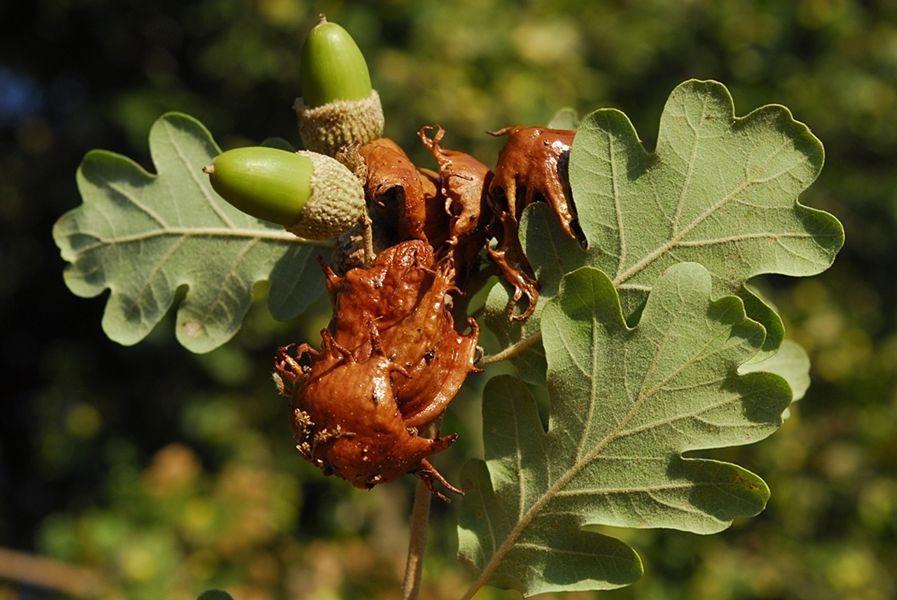
In the past (since the Roman times), the tannin considered the best to add to wine was that from the oak galls. If you walk near these trees, you can easily see strange growths on different parts of the plant (branches, stem, etc.). The gall is formed following the attack of a parasite that causes an uncontrolled proliferation of cell tissues. The plant reacts by accumulating defense substances, the tannins, in that point. The use of gall tannins is very ancient and continues today, although purified products are now used which can also have very high costs. Instead, the stalks were considered another system to add tannins, but with low quality results. Sometimes the leaves were also added in vinification, with decidedly less elegant effects in the wine. These systems were however tolerated and recommended in the past for the great mass of low quality cheap wine.
But, do we really need to add tannin to wine today? That is the fundamental question! In an artisan production as our, thanks to today’s knowledge, in a suitable area to the winegrowing, it is not necessary to correct the wines. It needs only when the grapes are the result of a bad work in the vineyard and in the cellar. In our opinion, the addition of tannin, whatever its origin, is something foreign to the production of a terroir-expressive wine. I don’t think there is conceptually much difference if it is done with stalks or with a purified oak tannin.
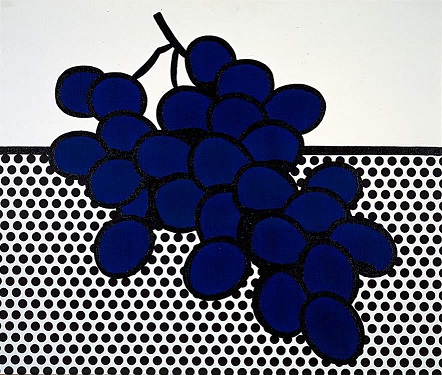
In the winery: from the hand destemming to the destemming machines
With the evolution of the winemaker practices of the nineteenth century, not only the stalks were rejected in fermentation, but even in the grape-pressing phase. The destemming became a qualitative practice described in all the viticulture texts, but carried out in the (few) wineries that produced refined wines. Later, it became more and more common.
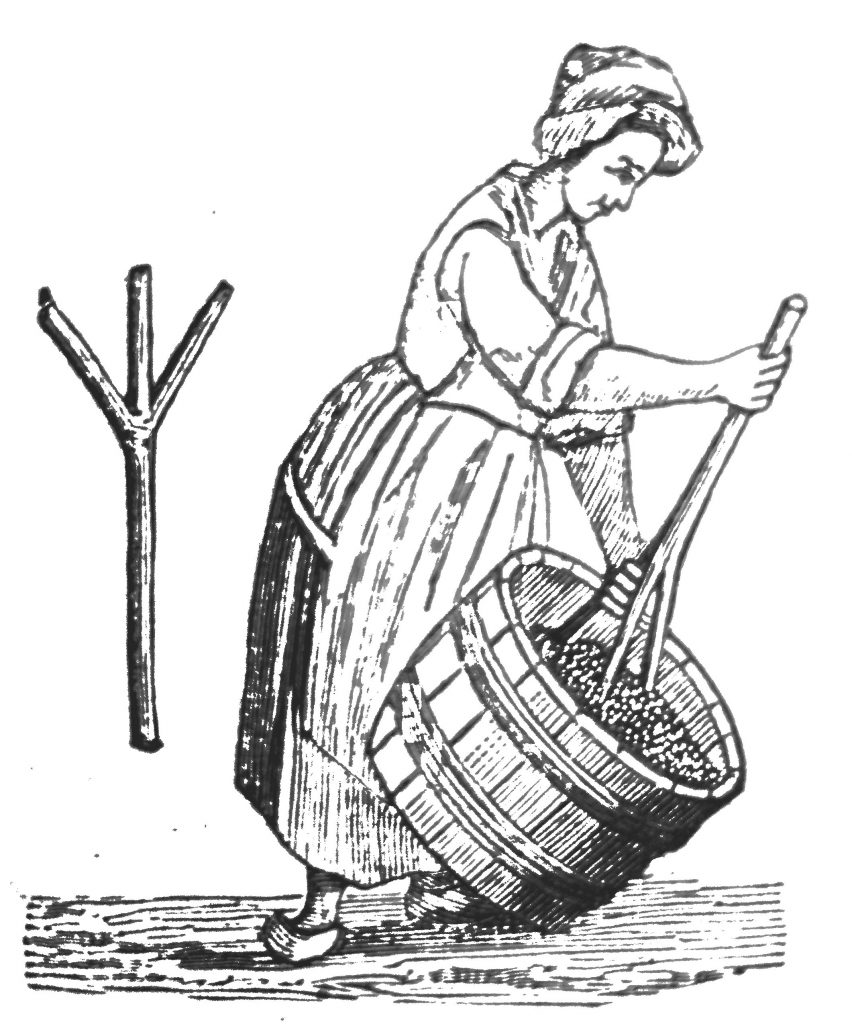
A very crude ancient system for destemming, ancestor (at least in the concept) of the modern machines, was to rotate a branched stick in a basket of grapes. In the most advanced companies, a more laborious but delicate system was preferred, that is to remove the berries from the stem by hand. For obvious reasons, these expensive practices were reserved for the few high-value wines.
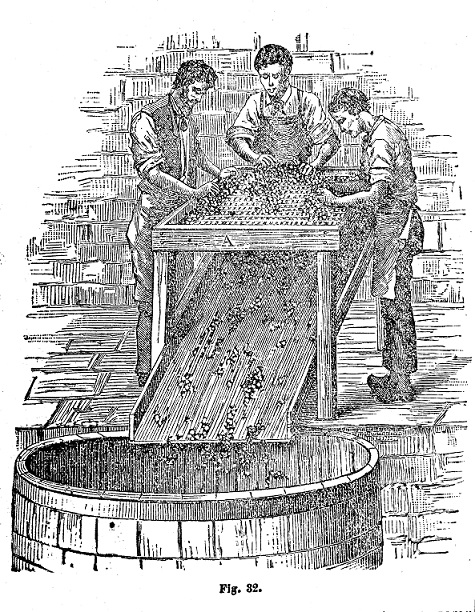
The first mechanical machines, first only crushers, then also destemmer-crushers, were for a long time viewed with suspicion due to the too destructive action on the grapes. The ones we use today are the result of a remarkable evolution which, over time, has leaded more and more towards the ability to act in a delicate way, carefully detaching the berries from the stalk without tearing or shredding the pedicels and the other green parts. Today’s machines also have the ability to press the berries very little.
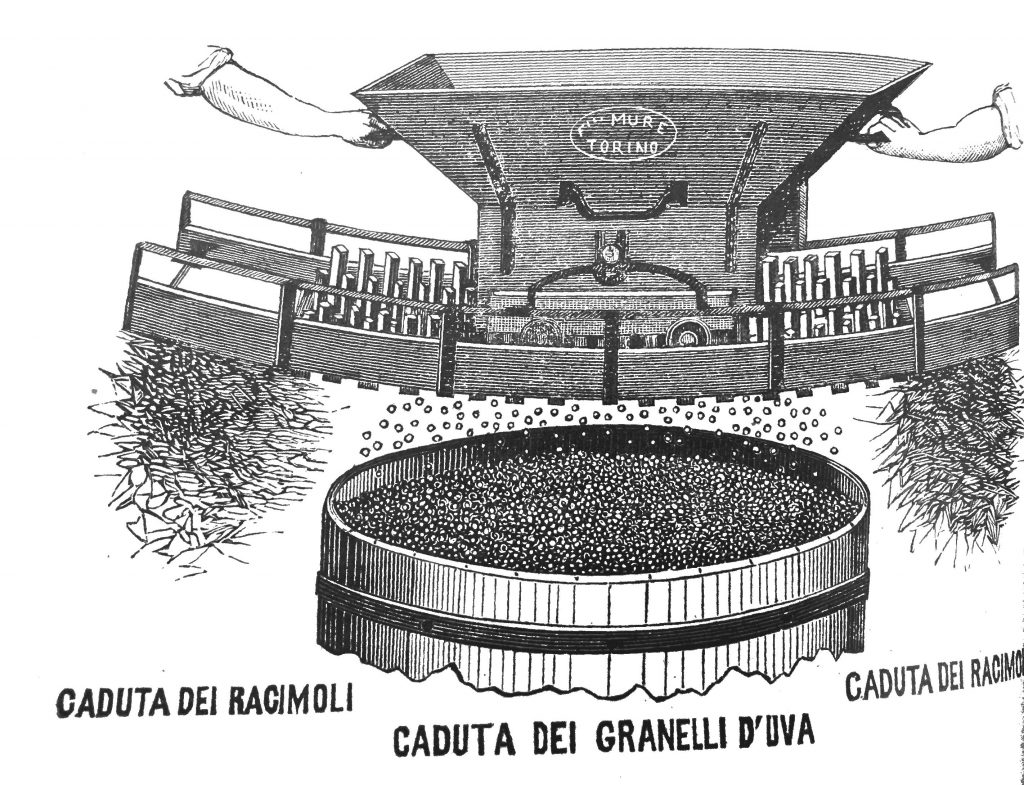
In the production of white wines, where the taste is much more delicate and the wine alters much more easily, it is yet more important not to bring bitter and astringent tastes unnecessarily in the must/wine, as well as easily oxidizable tannins. Many artisan winemakers, like us, do not press the whole bunches, but first they practice the destemming. After that, to be absolutely sure to eliminate all the small pieces of leaves or stalks or other, the cleaning of the must is carried out by spontaneous sedimentation. The must is stored overnight in the cool of the cellar and the sediments go down naturally to the bottom of the tank. Then, we remove the must from the above of the tank, without moving the sediment, and it was transferred to a new container for the fermentation.
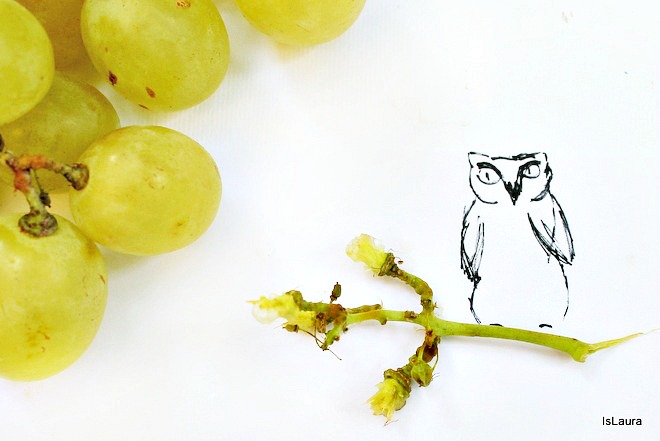
Ultimately, I think you have understood that Michele and I do not vinify with stems and the reason. For us, a natural wine is made with grapes only, with its unique balances that are born in suitable vineyards, thanks to a very good work for each individual plant. We don’t want to add nothing. The stalks bring something foreign to the fruit, not even so pleasant, which we prefer not to have. Our great territory already gives so much to our wines naturally, both in terms of taste and aromas. This does not mean that other winemakers could think that the contribution of stalks is useful, giving more importance to the advantages rather than the disadvantages.
The stalks are however important in our farm cycle, they are not just waste: after destemming, we put them in our composting area, where they contribute to form a perfect vegetable compost for fertilizing our vineyards.
Bibligraphy:
Riberaux-Gayon et al. “Trattato di scienza e tecnica enologica”, ed. AEB Brescia, 1980.
M. Blackford et al., “A Review on Stems Composition and Their Impact on Wine Quality”, Molecules. 2021 Mar; 26(5): 1240.
The vintage illustrations are from old books of our library on wine.